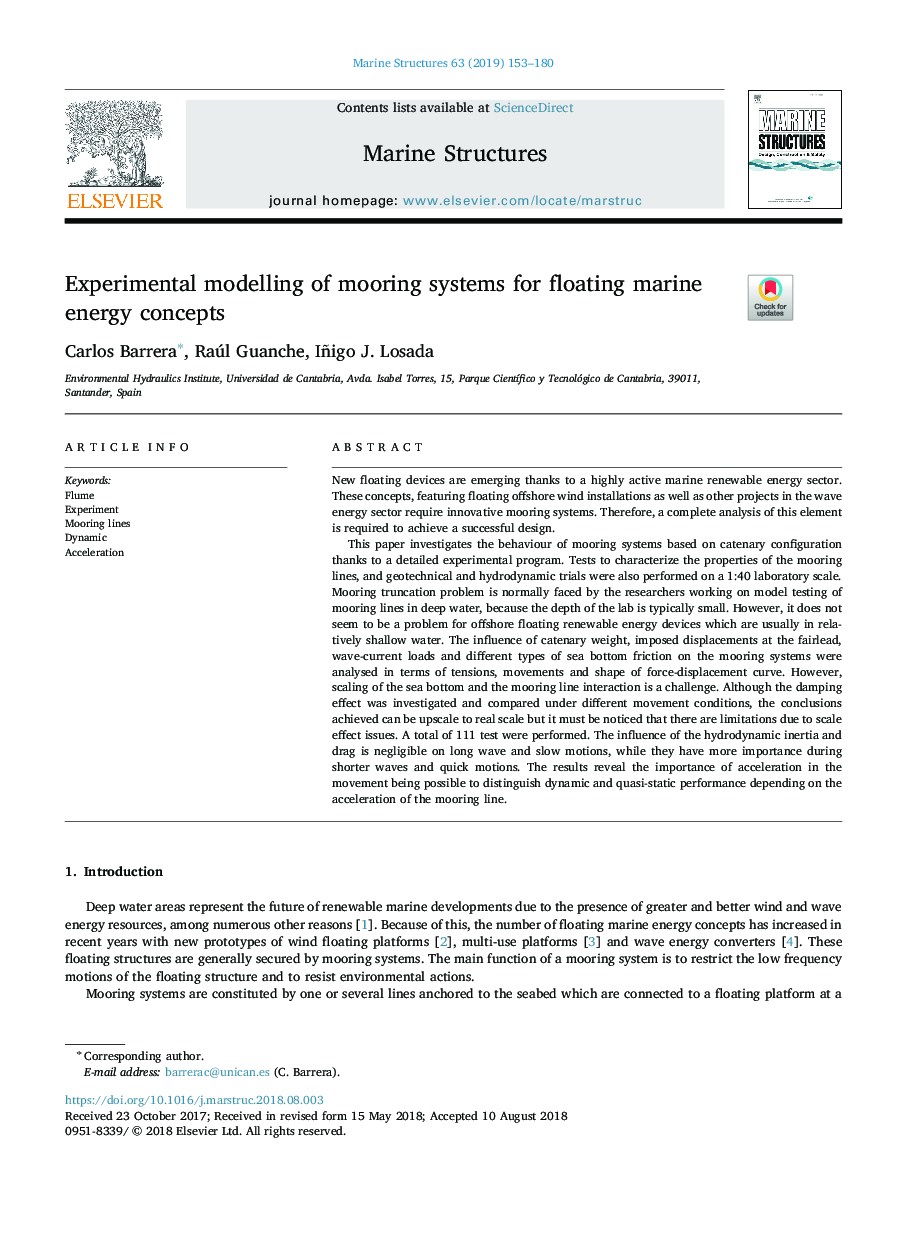| Article ID | Journal | Published Year | Pages | File Type |
|---|---|---|---|---|
| 11024166 | Marine Structures | 2019 | 28 Pages |
Abstract
This paper investigates the behaviour of mooring systems based on catenary configuration thanks to a detailed experimental program. Tests to characterize the properties of the mooring lines, and geotechnical and hydrodynamic trials were also performed on a 1:40 laboratory scale. Mooring truncation problem is normally faced by the researchers working on model testing of mooring lines in deep water, because the depth of the lab is typically small. However, it does not seem to be a problem for offshore floating renewable energy devices which are usually in relatively shallow water. The influence of catenary weight, imposed displacements at the fairlead, wave-current loads and different types of sea bottom friction on the mooring systems were analysed in terms of tensions, movements and shape of force-displacement curve. However, scaling of the sea bottom and the mooring line interaction is a challenge. Although the damping effect was investigated and compared under different movement conditions, the conclusions achieved can be upscale to real scale but it must be noticed that there are limitations due to scale effect issues. A total of 111 test were performed. The influence of the hydrodynamic inertia and drag is negligible on long wave and slow motions, while they have more importance during shorter waves and quick motions. The results reveal the importance of acceleration in the movement being possible to distinguish dynamic and quasi-static performance depending on the acceleration of the mooring line.
Related Topics
Physical Sciences and Engineering
Engineering
Civil and Structural Engineering
Authors
Carlos Barrera, Raúl Guanche, Iñigo J. Losada,
